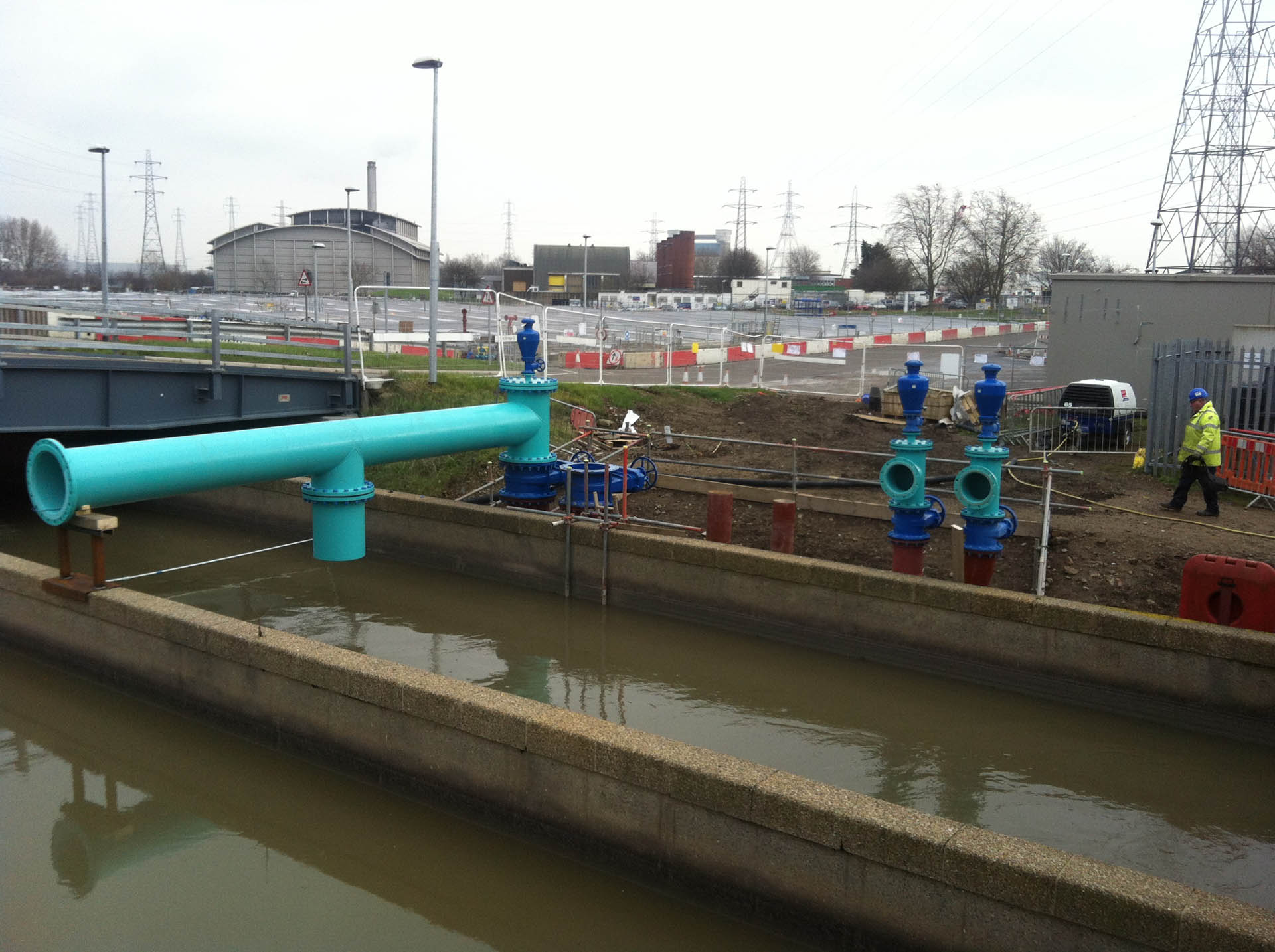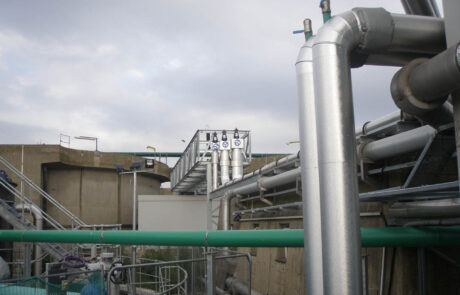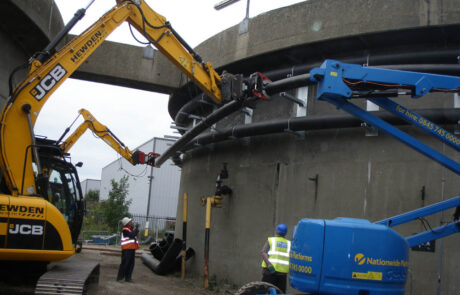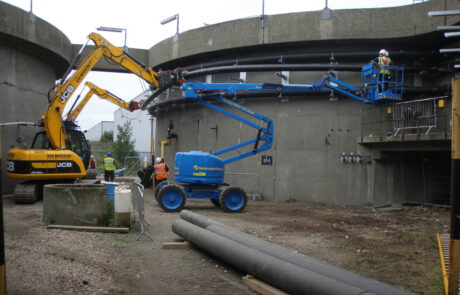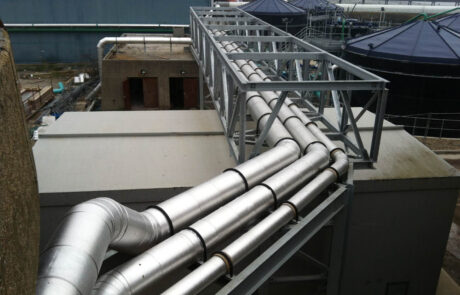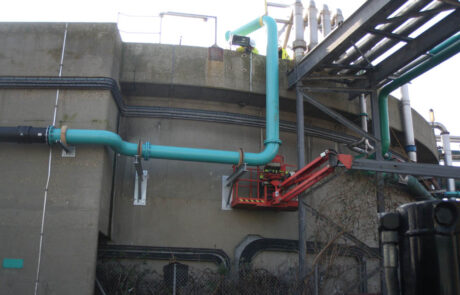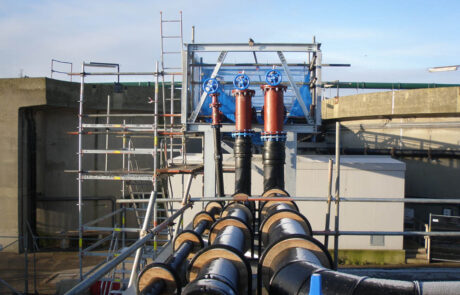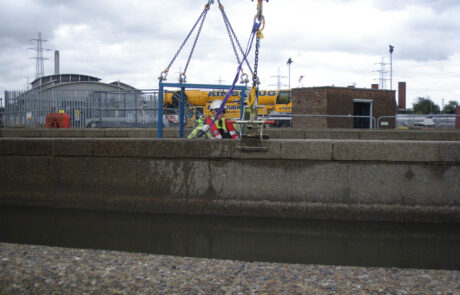Description: Falco was appointed by Principal Contractor Tamesis (a joint venture between Laing O’Rourke and Imtech Process) to facilitate the upgrade of the Beckton Sewage Treatment Works extension – a project which forms an integral part of Thames Water’s London Tideway Improvements programme.
The works involved the installation and commissioning of a series of above ground pressure pipelines of diameters up to 355mm to convey treated sludge & wash water across Europe’s largest sewage works.
The PE pressure pipelines were butt-fusion welded at ground level into strings of 18 metres in length and tandem-lifted onto purpose made pipe brackets drilled & bolted to the concrete radial tanks 6 metres above ground level.
The potential energy imparted into the pipes when bending them around the radial digester tanks was carefully controlled using novel pipe handling attachments fitted to 13 tonne excavators.
Electrofusion bends and couplings were installed at high level to join each of the individual strings. Work at height risks were managed using a combination of MEWP’s, traditional scaffolding, PASMA towers and man riding baskets to suit each work location.
A key section of the elevated pipelines crossed the busy main inter-site access road and a bespoke pipe bridge spanning 18 metres was designed and installed by Falco.
The bridge was lifted into place using a 70-tonne mobile crane working under the direction of Falco’s CPCS accredited Lifting Operations Appointed Person.
The pressure pipelines were successfully tested & commissioned at the first time of asking by Falco personnel under hydraulic test pressures of up to 18 bar. To complete the scope, the pipelines were lagged & trace heated to provide the required level of frost protection.
This work package was carried out as a part of a wider £180 million upgrade programme, which was completed in 2014, to increase the capacity at Beckon’s sewage facility by 60% allowing it to cope with increased flows during heavy rainfall, which currently discharge as storm sewage into the River Thames and River Lee when the site becomes overloaded.
The expansion has also been designed to accommodate additional flows from the proposed Thames Tunnel and will ultimately prevent streets and homes in the area from flooding.
